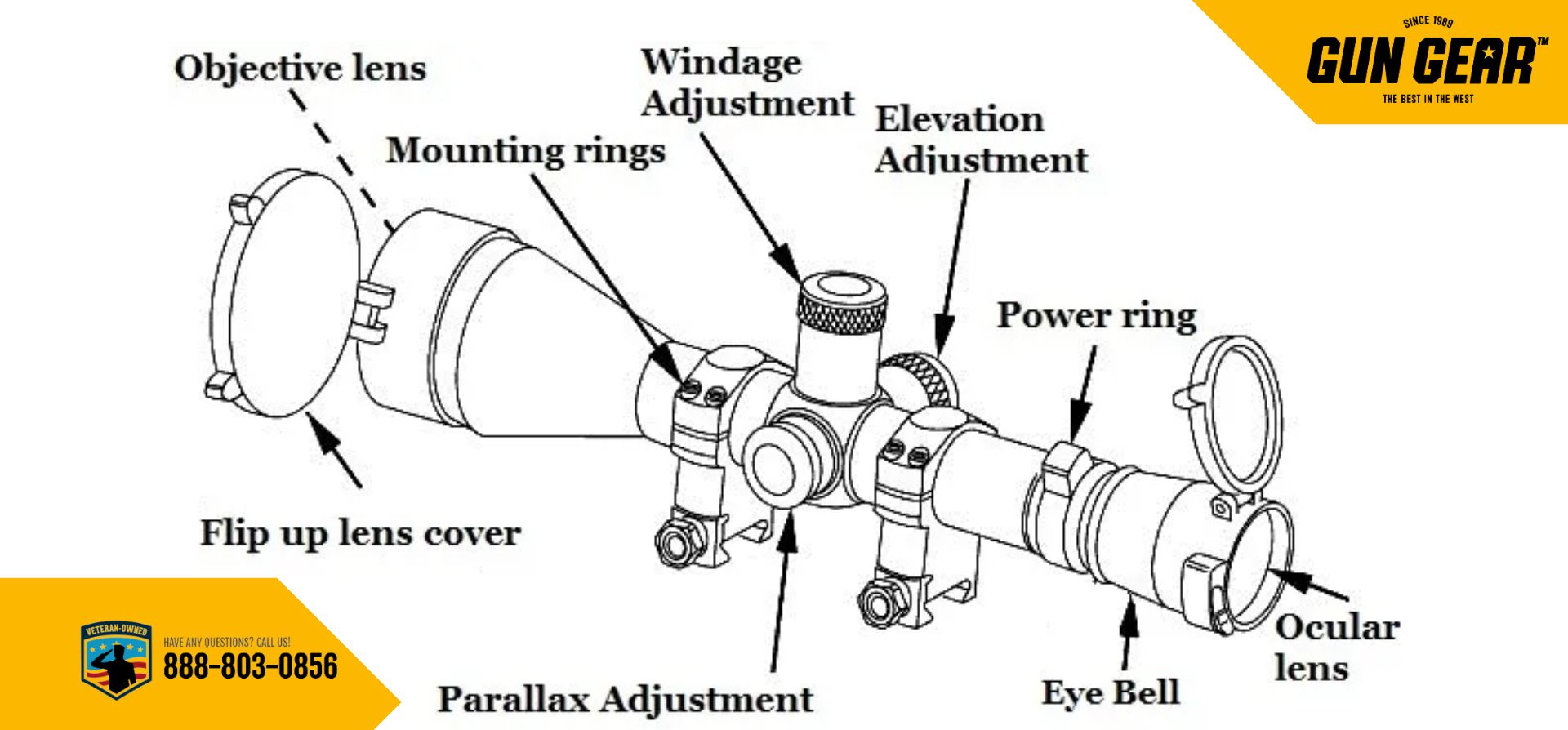
Rifle scopes are essential tools for shooters of all kinds, whether for hunting, competitive shooting, or tactical applications. They are optical devices mounted on firearms to enhance aiming accuracy by magnifying the target and providing crosshairs or other aiming points. Understanding their basic components and functionalities is crucial for anyone looking to improve their shooting skills.
Components of a Riflescope
A typical riflescope consists of several key components: the objective lens at the front, which gathers light; the ocular lens at the rear, where the shooter looks through; and the erector tube assembly, which houses lenses that adjust the image’s magnification and focus.
Types of Riflescopes
Rifle scopes vary widely in their design and capabilities. They can be categorized into fixed power and variable power scopes, with variable scopes allowing for adjustable magnification levels. Lens coatings also play a significant role in reducing glare and improving light transmission.
Understanding Riflescope Reticles
Reticles, or crosshairs, come in various designs such as crosshair, mil-dot, and bullet drop compensator (BDC). These patterns aid shooters in aiming accurately at different distances and under various environmental conditions.
How Rifle Scopes Work
Rifle scopes function based on the principles of light transmission and manipulation. The objective lens gathers light, which passes through the erector tube assembly for magnification adjustments. Windage and elevation turrets allow shooters to make precise adjustments to align the scope with the target.
Choosing the Right Rifle Scope
Selecting the appropriate rifle scope depends on factors like intended use (hunting, target shooting), shooting range, and environmental conditions. Budget is also a critical consideration, as high-quality scopes can vary significantly in price.
Maintaining Your Riflescope
Proper maintenance ensures the longevity and performance of a riflescope. Regular cleaning, avoiding exposure to harsh elements, and storing it in a protective case when not in use are essential practices to prevent damage and maintain optical clarity.
Advanced Features in Modern Riflescopes
Modern rifle scopes often come equipped with advanced features like illuminated reticles for low-light conditions and parallax adjustment for enhanced accuracy at different ranges. These features cater to specific shooting needs and preferences.
Comparing Different Brands and Models
There is a wide array of riflescope brands and models available on the market. Comparing customer reviews and expert recommendations can help in choosing a scope that best suits individual preferences and shooting requirements.
Tips for Using Rifle Scopes Effectively
Achieving optimal performance from a riflescope involves proper mounting on the firearm, precise zeroing, and adopting correct shooting techniques. Practice and familiarity with the scope’s adjustments are key to maximizing accuracy in different shooting scenarios.
Benefits of Using Riflescopes
Rifle scopes provide several advantages, including improved accuracy over long distances, faster target acquisition, and enhanced confidence in shooting abilities. They are indispensable tools for both recreational shooters and professionals alike.
Future Trends in Rifle Scope Technology
The future of riflescope technology is poised for advancements in digital integration, such as scope-mounted displays and smart features for data analysis and environmental conditions. Materials and design innovations will continue to enhance durability, performance, and user experience.
Conclusion
In conclusion, understanding the basics of rifle scopes and how they work is essential for anyone interested in improving their shooting accuracy and precision. From selecting the right scope to mastering its use, each step contributes to enhancing shooting skills and overall performance.
FAQs
1. Are all riflescopes waterproof?
Not all riflescopes are waterproof, but many higher-end models come with waterproofing to withstand various weather conditions.
2. How often should I clean my riflescope?
It’s recommended to clean your riflescope after every use or at least once a month if used frequently.
3. What is the difference between fixed and variable power riflescopes?
Fixed power scopes have a single magnification setting, while variable power scopes allow the user to adjust the magnification level.
4. Can I use the same riflescope for hunting and target shooting?
Yes, many riflescopes are versatile enough to be used for both hunting and target shooting, depending on their specifications.
5. What should I consider when zeroing my riflescope?
Consider factors like distance, ammunition type, and environmental conditions when zeroing your riflescope for accurate shooting.





